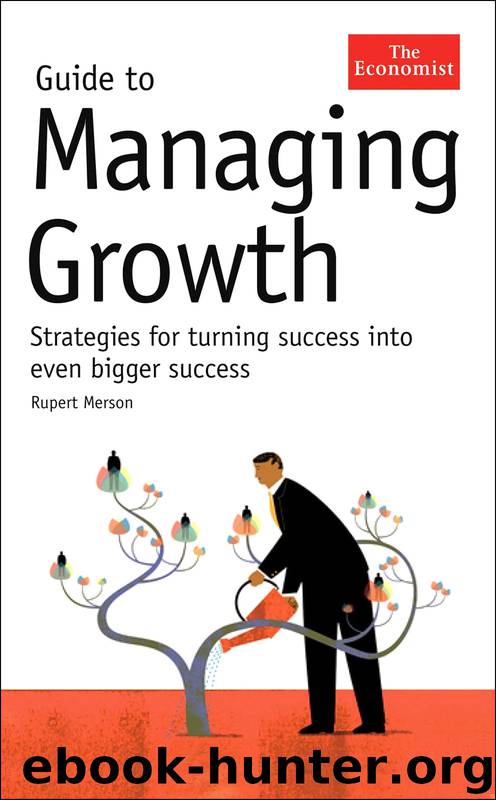Guide to Managing Growth by Rupert Merson

Author:Rupert Merson [Merson, Rupert]
Language: eng
Format: epub
ISBN: 9781610395175
Publisher: Perseus Books, LLC
Published: 2011-05-15T04:00:00+00:00
Managing the investment in growth
Growth is costly. In the long term growth may be the only way to secure a sustainable business, but in the short term it will cost money. A growing business must reinvest in itself and will need increasing amounts of working capital (the amount of resources tied up in the balance sheet in the cash cycle). A manufacturer will need to invest in raw materials, some of which will sit on the balance sheet. It may have to offer payment terms to its customers, in which case trade debtors will sit on the balance sheet as well. To a certain extent working capital pressures from stock and debtors may be lessened by payment terms taken by a company from its suppliers, but for many companies the terms they obtain from their suppliers are less generous than those their customers demand. When a company grows its working capital requirements increase, usually in advance of sales and profits turning into cash. Increases in working capital are at the expense of cash in the business.
Many growing businesses, especially business-to-business ones with reliable customers, take advantage of asset-based finance, borrowing mainly against debtors and occasionally against inventory as well. Borrowing against working capital is a particularly effective form of finance in a growing business as the capacity to borrow effectively grows with the business. But borrowing against working capital is often expensive. Moreover, every business has a debt capacity beyond which, if it is incapable of generating any more cash from its operations, it will be in danger of overtrading.
Those who have studied the arithmetical relationship between financing needs, profitability and growth, such as Neil Churchill and John Mullins in an article, “How Fast Can your Company Afford to Grow”, published in Harvard Business Review in 2001, have noted that in theoretical terms it is possible to calculate to what extent cash constraints determined by cash flows in and out of a business will allow the business to grow. Their essential principles should be taken to heart by the managers of every growing business:
A business that ties up cash unnecessarily on the balance sheet in the form of excess inventory or uncollected debtors is putting itself under unnecessary cash pressure.
A business that is paying its suppliers more quickly than necessary is putting itself under unnecessary cash pressure.
The higher a business’s margins, the greater its cash-generating capability is likely to be.
The faster a business grows, the more pressure it will put on its cash resources.
Download
This site does not store any files on its server. We only index and link to content provided by other sites. Please contact the content providers to delete copyright contents if any and email us, we'll remove relevant links or contents immediately.
Hit Refresh by Satya Nadella(8338)
The Compound Effect by Darren Hardy(7557)
Change Your Questions, Change Your Life by Marilee Adams(6641)
Nudge - Improving Decisions about Health, Wealth, and Happiness by Thaler Sunstein(6633)
The Black Swan by Nassim Nicholas Taleb(6190)
Daring Greatly by Brene Brown(5639)
Deep Work by Cal Newport(5463)
Principles: Life and Work by Ray Dalio(5322)
Rich Dad Poor Dad by Robert T. Kiyosaki(5147)
The Myth of the Strong Leader by Archie Brown(4789)
Man-made Catastrophes and Risk Information Concealment by Dmitry Chernov & Didier Sornette(4735)
Big Magic: Creative Living Beyond Fear by Elizabeth Gilbert(4723)
The Slight Edge by Jeff Olson(4722)
Discipline Equals Freedom by Jocko Willink(4634)
Digital Minimalism by Cal Newport;(4540)
The Motivation Myth by Jeff Haden(4524)
Stone's Rules by Roger Stone(4415)
Management Strategies for the Cloud Revolution: How Cloud Computing Is Transforming Business and Why You Can't Afford to Be Left Behind by Charles Babcock(4130)
The Doodle Revolution by Sunni Brown(4042)
